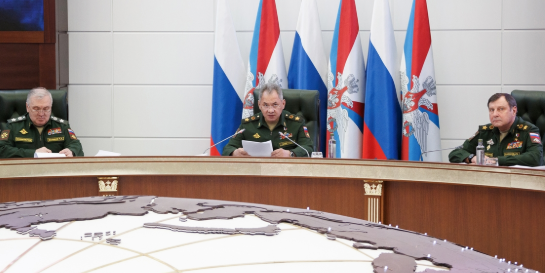Here are the Russian MOD’s numbers on coronavirus infections in the military through May 8. It’s important to follow the official figures, accurate or not, just to compare with other data and events.
On May 6, irresponsible and ridiculous as it may sound, Defense Minister Shoygu came close to claiming that the Russian Armed Forces are turning the corner on COVID-19:
“Our military medics have been doing great work in battling coronavirus. As a result the number recovered exceeds the number of sick. We understand this could and should be the same plank, shelf, I don’t what else to call it. But to defeat it is possible only when the quantity recovered is more than the quantity sick. Every day.”
Mr. Shoygu seemed to be fumbling toward asserting that the MOD is flattening its infection curve. But epidemiology and even his numbers don’t really support the contention. Even assuming they are true and accurate. Shoygu may be confused by the military’s reporting on those in contact with infected people who didn’t contract the disease.
The Russian MOD ended the training year for pre-military cadets on April 30, and seemed to drop reporting on their cases but then resumed a few days later. New positive tests among VVUZ students appear to have leveled off. But again it’s all about who gets tested and how accurate the test is. And students deemed healthy presumably went home after April 30.
With the number of cases the MOD has reported, it’s hard to believe there have been no deaths from COVID-19 in the military.
The next test for the Russian MOD will come when it starts bringing young men into military commissariats and sending new conscripts out to their units later this month. Draftees are supposed to be tested and free of coronavirus, but we’ll see how this goes.
On the larger picture, the Russian government on May 8 reported 188,000 cases with just over 1,700 deaths — a mortality rate of just 0.9 percent. Russia is being ultraconservative in estimating causes of death. Most countries report rates of four, five, or even seven percent. Moscow Mayor Sergey Sobyanin — the public face of Russia’s response to the crisis — says Russia’s COVID-19 infections may be double that official 188,000 number.
Meanwhile, President Putin continues to be distant from all this, having turned his famous manual control into remote control.

Independent pollster Levada reports Putin’s approval has dipped to 63 percent, the lowest since before Russia’s seizure of Ukraine and war in eastern Ukraine.




